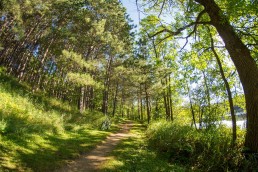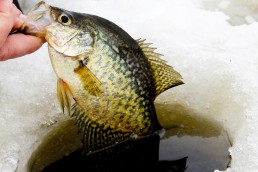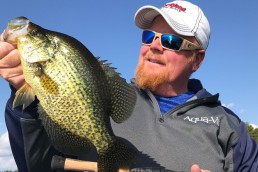Minnesota’s Outdoor Scene
SHARE THIS POST
Spring wild turkey lottery not required for most areas
Hunters do not need to enter the spring lottery for most wild turkey permit areas. With the exception of the Carlos Avery, Mille Lacs and Whitewater wildlife management areas, all spring turkey permits for all seasons will be sold over-the-counter beginning Sunday, March 1. Most permits are not restricted to a specific turkey permit area. Permit holders may hunt any area except the Carlos Avery, Mille Lacs and Whitewater wildlife management areas.
Snowmobile safety tips
- Watch the weather and check trail conditions before riding
Don’t ride in adverse weather conditions. Plan your trip and check the trails you’ll be riding prior to departure. Check trail conditions and trail maps.
- Don’t drink alcohol and ride
Alcohol is a factor in over 60 percent of all fatal accidents in Minnesota, as well as many non-deadly snowmobile accidents. Alcohol and drugs have a negative effect on the driver’s vision, balance, coordination, and reaction time. Don’t ride with people who drink and ride! Minnesota is part of a larger coalition of snowmobiling states that support “Zero Alcohol” consumption before or during your ride.
- Never ride alone
Always ride with a friend on another snowmobile. This way if one machine is disabled, you have another to get help.
- Dress for safety & survival
Always wear a quality DOT helmet and facemask. Wear layers of clothing to keep warm and dry. Snowmobile suits, bibs, jackets, gloves and mittens should cut the wind, repel water and keep you ventilated.
- Slow down
Excessive speed is a major factor in many accidents, especially at night. To help avoid accidents, keep your nighttime speed under 40 mph.
- Stay to the right
Almost every trail is a “two-way” trail. So, stay to the far right of the trail, especially on hills and corners. Obey all trail signs and cross roadways with extreme caution.
- Stay on the trail or stay home
Trespassing is a major complaint about snowmobilers and can result in trail closure. Always stay on designated snowmobile trails. Venturing off of trails can result in accidents. Only ride private property when you have landowners’ permission.
- Riding on ice—lakes & rivers
It is safest to avoid riding on lakes and rivers. If you must ride on ice, wear a life jacket over your outer clothing. Stay on the marked trail and stay off of ice that has moving water (current) near or under it—ice in these areas may be thin and weak.
DNR issues ice warning for aerated lake
The Minnesota Department of Natural Resources urges people to use caution on lakes with winter aeration systems.
Aeration creates areas of thin ice and open water that are extremely hazardous to people and pets. Open water areas can shift or change shape depending on weather conditions, and leaks may develop in airlines, creating other areas of weak ice or open water.
“We’re urging people to use caution anytime they venture onto lake ice, especially at night,” DNR aeration coordinator Amanda Yourd said. “Extreme care should be taken on aerated lakes. Watch for the large orange and black warning signs at high use public accesses and the required thin ice signs around open water areas.”
Aeration systems help prevent winterkill of fish populations by adding oxygen to the lake and, in certain situations, help protect shorelines from ice damage. They are generally operated from the time the lakes freeze until the ice breaks up in the spring. About 260 lakes have aeration systems operating on them this winter. Private hatchery operators also use aeration systems, usually on small lakes without public accesses.
A DNR permit is required to install and operate an aeration system. Permit holders must issue public notices, post warning signs and inspect the systems at least once every seven days. Private groups or citizens operating aeration systems generally are required to have liability insurance. DNR staff ensures permittees comply with all requirements and regularly inspect systems for safety.
Some municipalities may have ordinances that prohibit entering into the thin ice marked area and/or prohibit the night use of motorized vehicles on lakes with aeration systems in operation. These local regulations are often posted at accesses where they apply.
Are you enjoying this post?
You can be among the first to get the latest info on where to go, what to use and how to use it!
For more information…
The updated list of aerated lakes and more information is available at mndnr.gov/eco/lakeaeration.
Questions concerning aeration or thin ice can be answered by calling a regional or area fisheries office or the DNR at 888-646-6367.
Extensive sampling of wild deer in 2019 shows that CWD remains biggest concern in southeastern Minnesota
During the 2019 hunting season and special hunts, chronic wasting disease was confirmed in 27 wild deer, all from southeastern Minnesota.
CWD was not detected in wild deer in central and north-central Minnesota.
“Overall, this is good news for Minnesota’s wild deer. The disease is still relatively rare across the state, and the CWD-positive test results this year came from areas where we had the most risk,” said Lou Cornicelli, DNR wildlife research manager.
In total, 12,618 hunter-harvested deer were tested in the southeast disease management and control zones, 3,965 in the north-central disease management zone, and 536 in the central surveillance area.
An additional 282 opportunistic samples (deer found dead or reported sick) were tested, with one CWD-positive found within the southeast disease management zone. Researchers are still submitting some samples from cooperating taxidermists. Final results will be updated online at mndnr.gov/cwdcheck as they become available.
Minnesota’s CWD response plan calls for testing of wild deer for three years after the disease is detected in either captive or wild deer because the disease incubates in deer slowly. Before the DNR stops looking for the disease in an area, test results for three consecutive years must not detect CWD.
- Southeastern area
In southeastern Minnesota, 23 additional cases of CWD were discovered in the disease management zone during the fall hunting season. Three additional deer were found positive for CWD after testing from the two special hunts in this area. The southeast control zone, a buffer area around the management zone, returned no CWD-positive results.
- North-central area
This was the third year of sampling in the north-central area, after the discovery of CWD in a deer farm in Crow Wing County. More than 8,000 wild deer were tested during falls 2017 and 2018 without any detection of CWD; however, one CWD-positive deer was found dead near the infected farm in January 2019, which sparked more aggressive control strategies.
The management zone, deer permit area 604, will remain in place for at least two more years to see if CWD is found in other wild deer in the area.
“We’ll continue watching the north-central area to see if disease is present beyond the one CWD-positive deer discovered last year,” Cornicelli said.
- Central area
Because no wild deer positives were detected in the central surveillance area in its third consecutive year of testing, there will be no more testing in this area during the 2020 hunting season. Precautionary testing in central Minnesota began in 2017 after the discovery of CWD at a deer farm in Meeker County.
MWO
SHARE THIS POST
Did you enjoy this post?
You can be among the first to get the latest info on where to go, what to use and how to use it!
MWO
We believe being outdoors is good. With more than 1,000 articles each year, MidWest Outdoors magazine is all about sharing outdoor experiences with you—where to go, what to use and how to use it… whether you’re close to home or on that trip of a lifetime.



